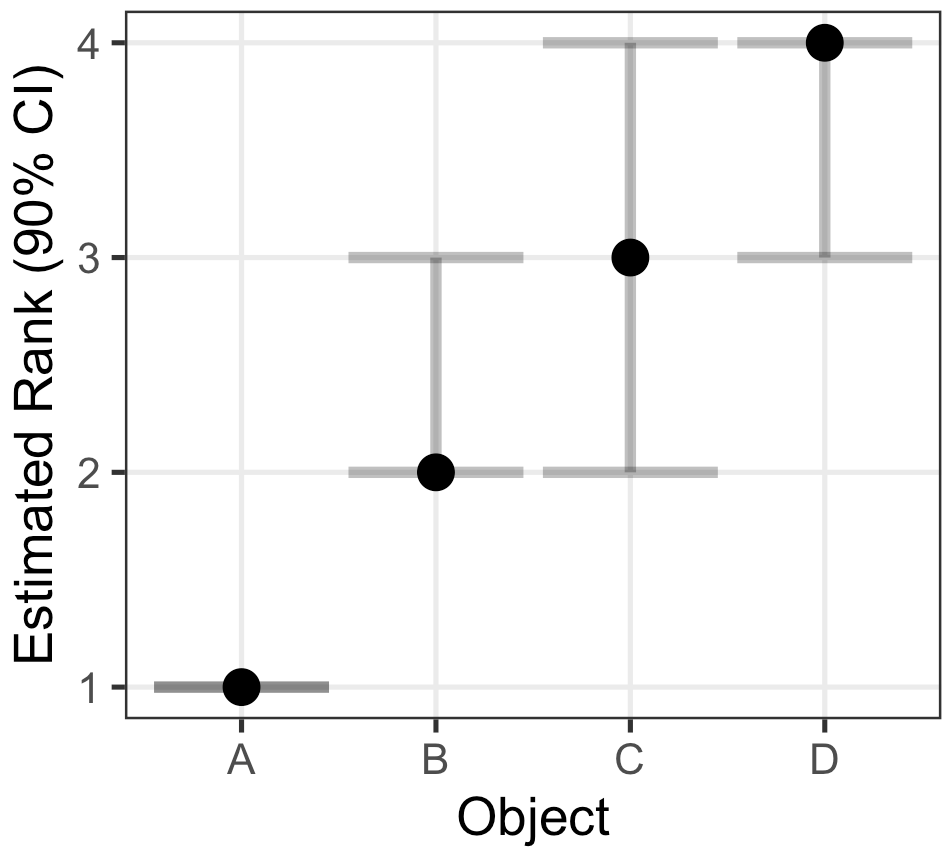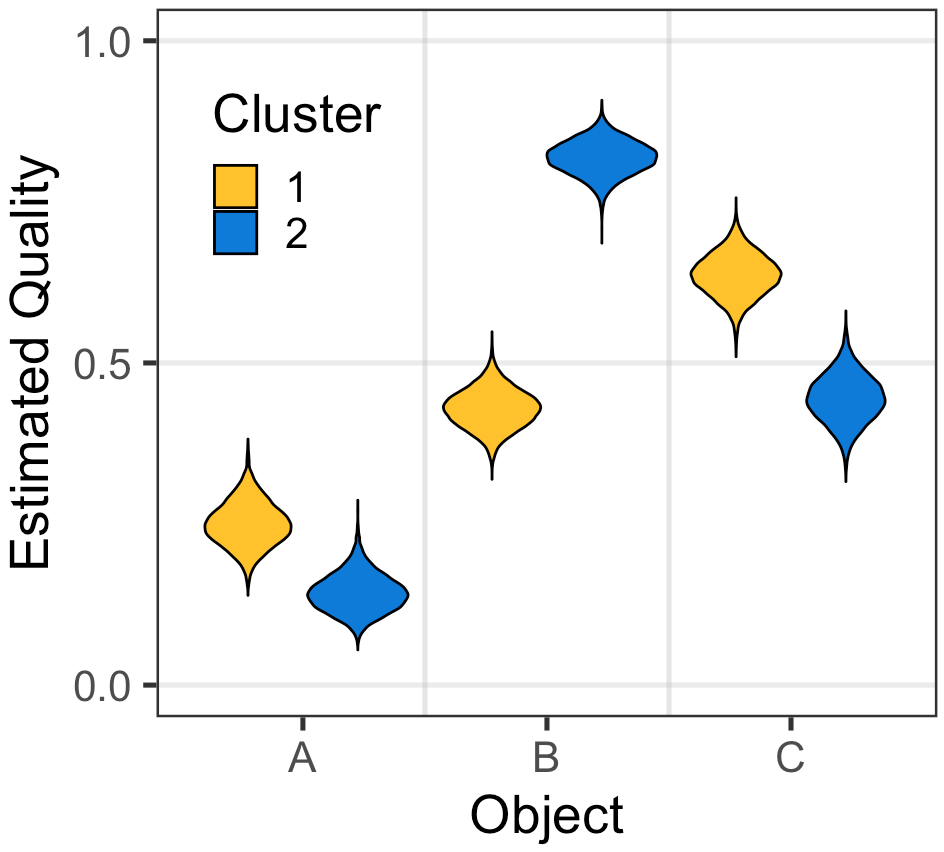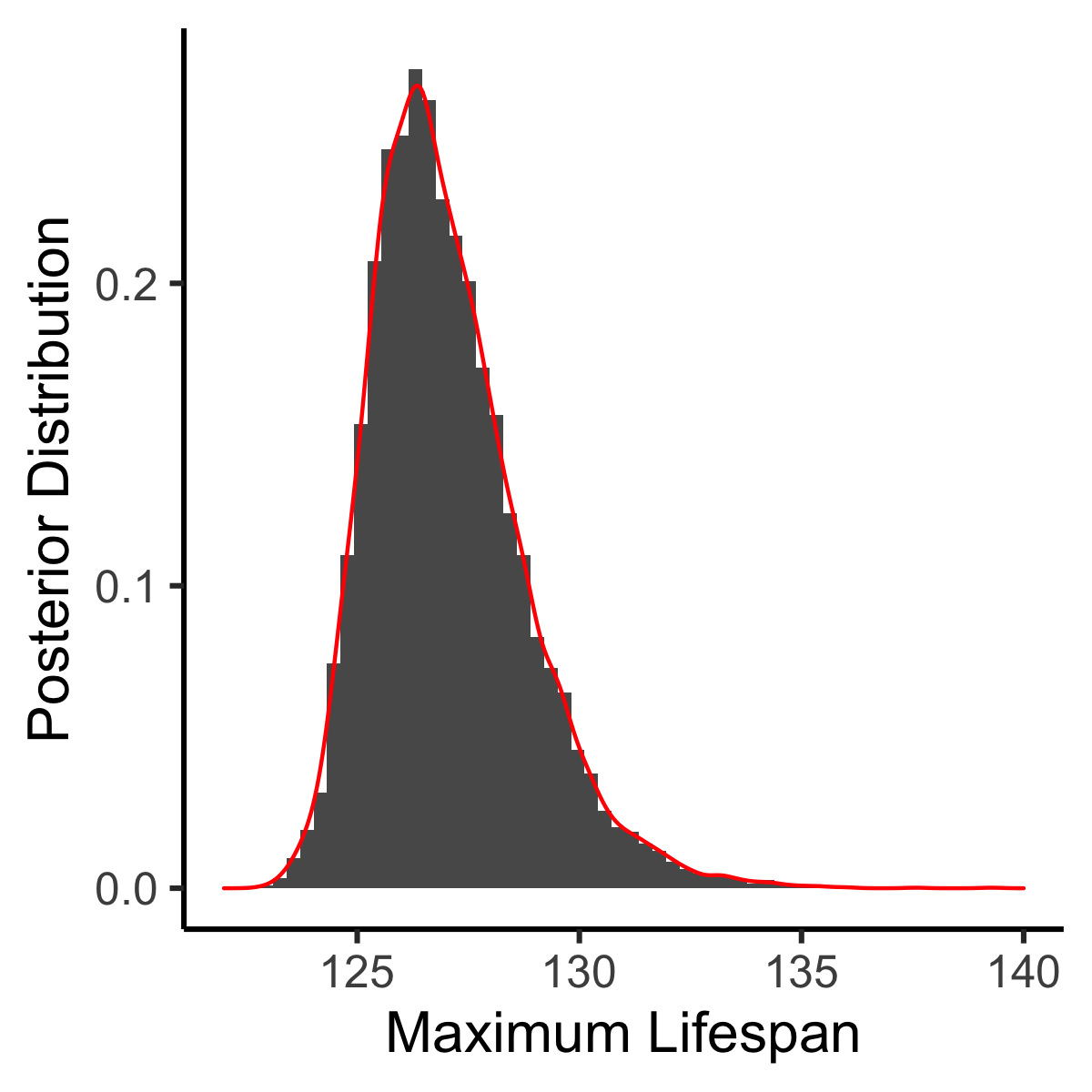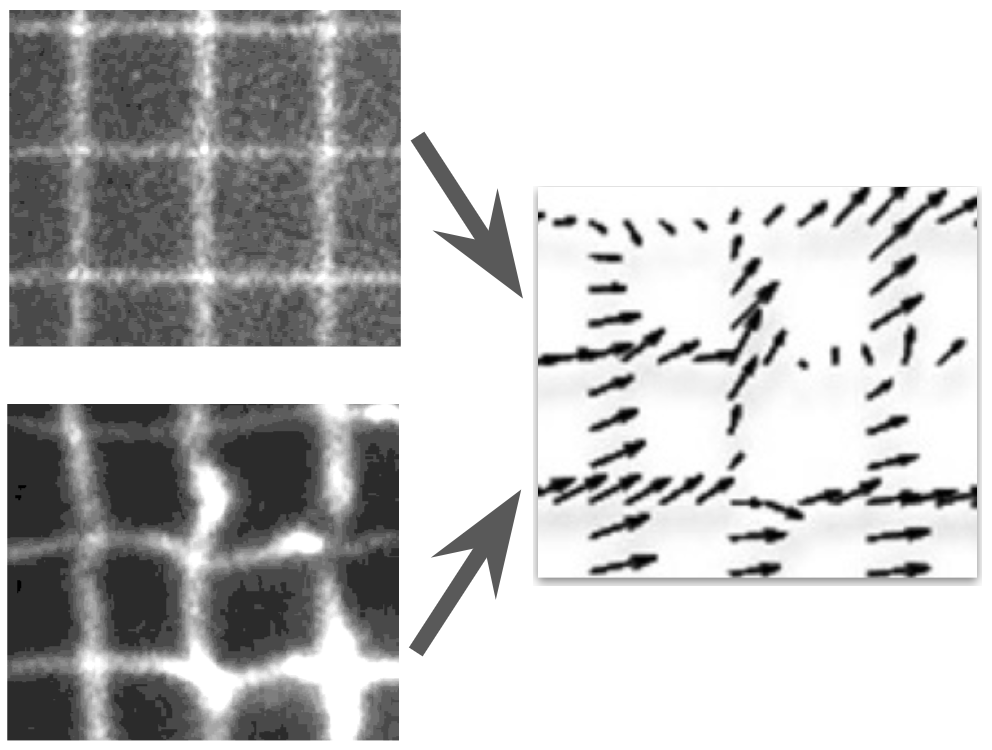
Unified modeling of ratings and rankings for peer review
Ratings and rankings are often used by individuals to express preferences about a collection of objects. Although these two data types
have distinct and complementary properties, they are usually studied independently. In this work, we propose the first joint
statistical model for ratings and rankings that does not rely on data conversion. Our model
efficiently estimates the perceived quality of objects, the level of consensus among reviewers, and an overall ranking of objects.
We apply the model to real peer review data and demonstrate its ability to aid good decision-making
using ratings and rankings. This work was published in the Journal of
Machine Learning Research, and additional theoretical results regarding the use of the bootstrap for uncertainty quantification
are available on arXiv. An applied, non-technical paper demonstrating our method for people who work in
peer review was published in Research Integrity and Peer Review.

Bayesian modeling of ratings and rankings under heterogeneity
In this follow-up work, we propose a flexible, joint statistical model for ratings and rankings under preference heterogeneity.
Our proposed model can handle additional types of ranking data, including pairwise comparisons and incomplete ratings, and
account for various realistic scenarios in preference learning like separate ballots, missing data, and conflicts of interest.
Furthermore, the model estimates both the amount and type of preference heterogeneity among individuals using a Bayesian mixture of
finite mixtures approach. The model is applied to large-scale academic conference peer review, small-scale grant
panel review, and survey data on sushi preferences. The work is available as a preprint on
arXiv.

Bayesian forecasting of the maximum human lifespan to 2100
In this project we probabilistically forecast how long someone may live by 2100. Our
unified and fully Bayesian approach relies on two components: Estimating a survival model for supercentenarians (people aged 110+)
using high-quality data from the International Database on Longevity, and
quantifying population uncertainty using Bayesian population projections. This work was published in June 2021 in the journal
Demographic Research and has since been featured in a
number of major news outlets such as the
Washington Post,
BBC News,
and CNBC.

Nonparametric modeling of high-speed gas flow imaging data
This NSF-funded project was completed as a senior undergraduate student at St. Olaf College as part of the
Center for Interdisciplinary Research. We developed an algorithm to read and analyze
molecular tagging velocimetry images, a technique for studying high-speed gas flows in chemical experiments. Our method de-noises and processes
image pairs using nonparametric techniques to create 2D velocity fields, and shows improved accuracy and resolution over existing methods.
This work was published in the journal Measurement Science and Technology.